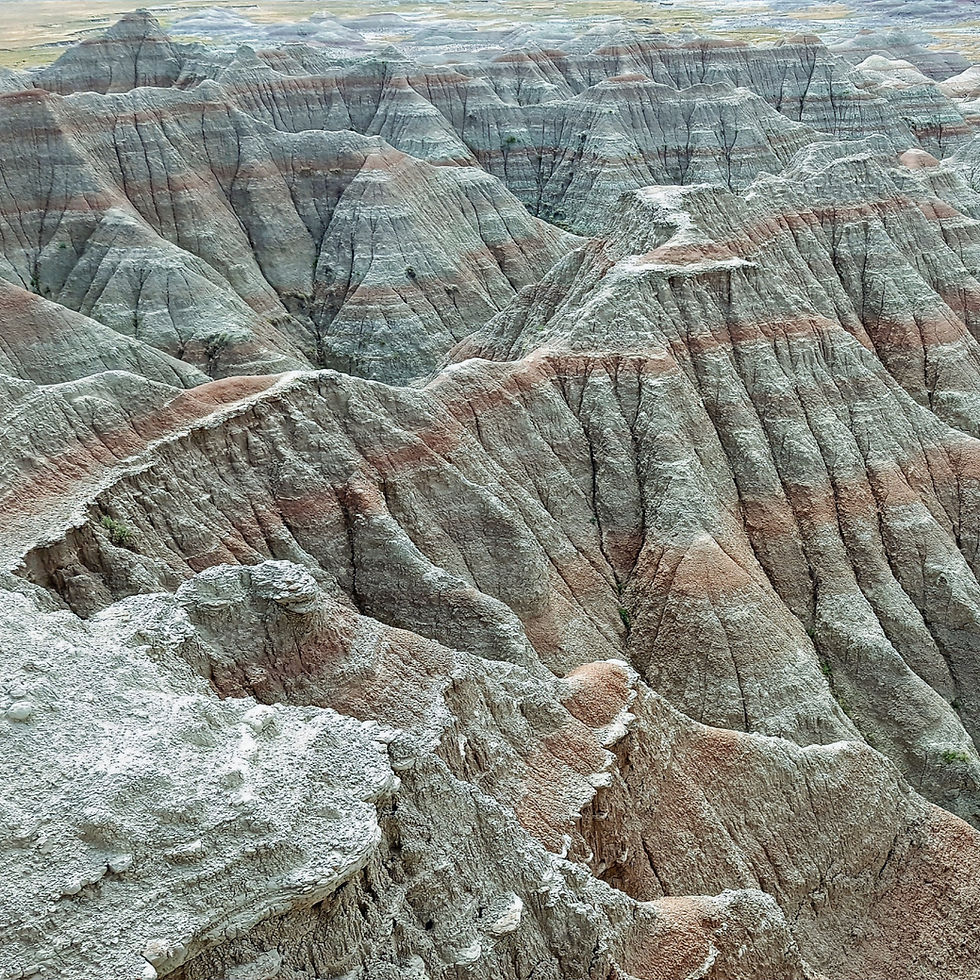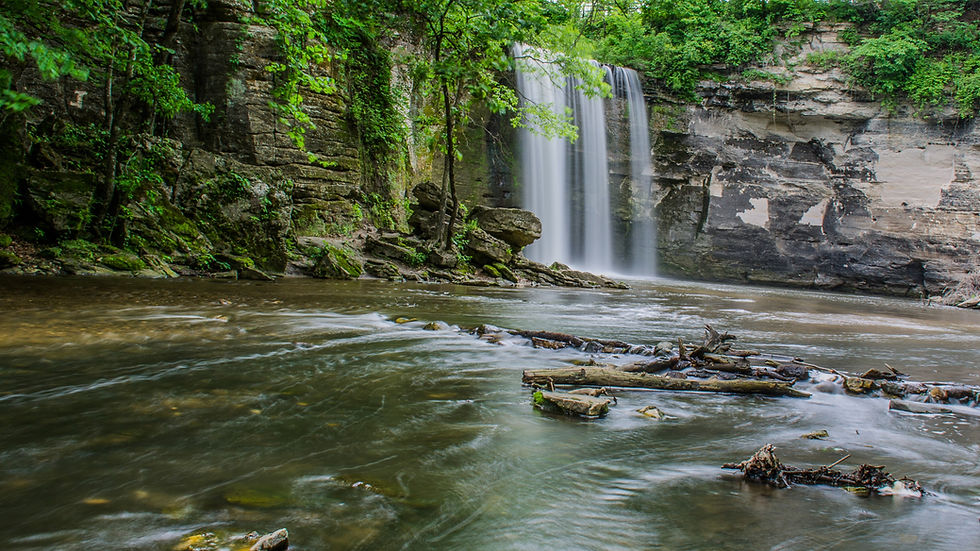Forest-covered bluffs, a superb aquarium and inspirational murals are just some of the fun attractions along Iowa’s Mississippi River road
- Greg Phillips
.JPG/v1/fill/w_320,h_320/file.jpg)
- Apr 16, 2024
- 4 min read
Updated: Apr 30
This byway is one of our choices for Iowa’s Top Scenic Byways, as listed in our Iowa section.

More than just the most important river system in North America, the Mississippi River is a road tripper’s dream come true with inspiring scenery, cultural attractions and recreational activities galore. From the river’s headwaters in Minnesota, it flows 2,350 miles through ten states before passing through Louisiana and emptying into the Gulf of Mexico. Scenic byways follow both sides of the river from beginning to end, and Iowa’s section is one of the finest. In fact, there are so many great things to see and do that we’ve split the drive in two. This article profiles the scenic byway’s upper section, from the Minnesota state line to Dubuque with a side trip to the Field of Dreams Movie Site. Our story on the lower section is coming soon!
Minnesota state line south to Dubuque and Field of Dreams Movie Site
Distance: 130 miles / 209 km
There are many superlatives to describe the Mississippi River. It’s one of Earth’s largest river systems in size and habitat diversity. In North America, it’s a major migration route for birds and fish. And it’s one of the world's most important commercial waterways. Unlike more isolated, less developed major rivers around the globe, roads generally parallel the entire 2,552 miles of the Mississippi. Called the Great River Road, you can follow the river’s length from its Minnesota headwaters to the Louisiana delta. Iowa’s section of the Great River Road is one of the best, blending Native American history and high bluff overlooks with aquariums, a cave tour, nature preserves and a beloved baseball field. Fittingly, it’s also an All-American Road, the highest designation in the National Scenic Byways program.
By the time the Mississippi River reaches the Hawkeye State, it’s already meandered several hundred miles through Minnesota, as profiled in The North Star State’s section. Starting in the far northeast corner of Iowa, State Highway 26 enters New Albin. Minneapolis, the closest major city, is 180 miles northwest. Des Moines lies 240 miles southwest. A mix of county, state and US highways make up the route. Road numbers change as you drive south along the river so always keep watch for the familiar Great River Road sign.
From New Albin, it’s 11 miles to the next small town, Lansing, which has a bridge crossing to Wisconsin. This part of Iowa is especially picturesque with hills, river valleys and limestone bluffs covered in hardwood forest, meaning summer shades of green and magnificent fall colors. You’re also now driving through the Upper Mississippi River National Wildlife and Fish Refuge. The Driftless Area Education and Visitor Center has interpretive exhibits and information on recreational activities such as hiking, canoeing, kayaking, fishing and hunting.
From Lansing, it’s 24 miles south to Effigy Mounds National Monument. Humans have lived in the region for more than 10,000 years and the monument has 206 prehistoric mounds, from 850 to 2,500 years old. Their origin and purpose are unknown although the oldest, conical-shaped mounds were used for burials. Some 1,400 years ago, mounds in the form of bears and birds were created. The monument is an important Native American site with forest hiking trails and high bluffs overlooking the Mississippi River. However, the animal shapes can be hard to make out when standing so close. They were likely visible from far away, particularly when trees were removed. Be sure to stop at the visitor center for exhibits and information.
A few minutes south lies one of the many attractive towns along the river. Founded in the mid-1800s, McGregor’s brick buildings house restaurants and shops selling gifts, antiques, books, clothes and ice cream. Across the river is the much larger Prairie Du Chien, Wisconsin with fast food, big box stores, hotels and several campgrounds.
The camping spot with the best views is Pikes Peak State Park, just south of McGregor. With 11 miles of trails, the park offers a variety of hiking terrain. Easy walks lead to Bridal Veil Falls and bluff overlooks with sweeping views of the confluence of the Mississippi and Wisconsin rivers. At 1,130 feet, the park has the highest bluff along the Mississippi and like Colorado’s Pikes Peak, is also named after Zebulon Pike, the explorer and U.S. brigadier general.
From Pikes Peak State Park, it’s 18 miles to Guttenberg, another interesting riverside town and a good place to see the inner workings of the Mississippi. There are 29 dams on the Upper Mississippi River that create pools deep enough for large towboats to navigate. The dams have locks which raise and lower vessels between levels. In operation since 1937, Lock & Dam Number 10 is in Guttenberg, with a viewing platform where you can watch ships and boats move through the locks. The nearby Lockmaster House Heritage Museum is the last remaining lockmaster house on the Upper Mississippi River featuring artifacts, antiques, photos and other memorabilia. The Guttenberg Fish Hatchery also deserves a quick visit. Located downtown, it raises northern pike fry for the Iowa Department of Natural Resources and has an aquarium with local fish species and exhibits.
The granddaddy of Mississippi aquariums is farther down the river some 40 miles. Chartered in 1837, Dubuque is Iowa’s oldest city and one of the first European settlements west of the Mississippi River. Today, this comfortable, enticing midsize city features restored brick buildings, colorful murals, breweries, art galleries and a strong theater and music scene. The first-rate National Mississippi River Museum & Aquarium has numerous indoor and outdoor displays on a large campus. Native American history, river heritage, the National Rivers Hall of Fame, dugout canoes, mischievous river otters and a slew of wildlife and nature exhibits make it a top draw.
Another major attraction in the area is a 52-mile roundtrip detour west of Dubuque. The Field of Dreams Movie Site in Dyersville is where many scenes from the beloved 1989 baseball classic were filmed. You can run the bases, play a pickup game, tour the Kinsella farmhouse and walk out of rows of corn, just like the ghosts of baseball legends. And if you’re tired of the chain motel, consider the “Kinsella Experience” where you spend the night in the three-bedroom home. Because this route is so long, we’ve broken it into two parts. In the next article, we pick up the tour in Dubuque and continue down river.





Comments